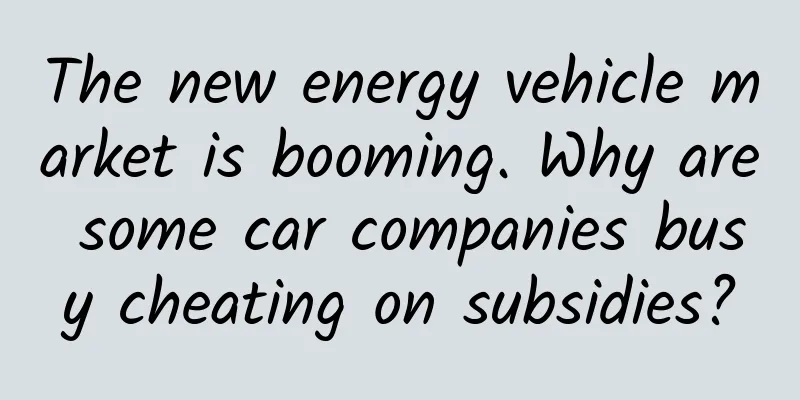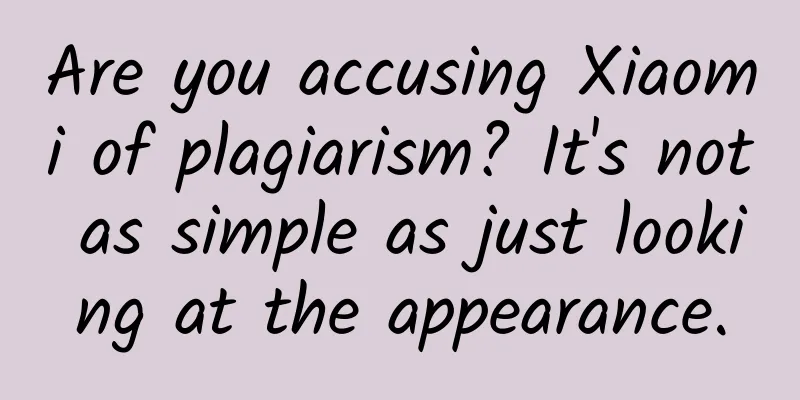The new energy vehicle market is booming. Why are some car companies busy cheating on subsidies?

|
The focus of new energy vehicle policies can be considered to be tilted towards R&D and infrastructure construction. Those companies that survive only by relying on subsidies will inevitably be eliminated by the market. A few days ago, I took my friends to watch the popular movie "Lu Deshui". The story goes like this: a rural school called a donkey "Lü Deshui" teacher and reported it to the state to defraud education subsidies. Later, the education department sent people to investigate, and the matter was gradually exposed. After watching the movie, people regarded "The Donkey Gets Water" as an absurd joke, but at least the donkey completed the task of fetching water for the school. In reality, there are more absurd things than this. In September, the Ministry of Finance reported on a special inspection of new energy vehicle subsidies, which revealed that many automakers had fabricated sales, had cars with no electricity, and left them idle after receiving subsidies. According to media reports, some automakers repeatedly installed batteries on different car shells in order to defraud subsidies, and then "sold" them to subsidiaries, repeatedly asking the government for subsidies. Such "empty shell cars" cannot be driven on the road, let alone transport water. The country attaches great importance to the new energy vehicle industry. With the strong support of industrial policies, my country's new energy vehicle market is booming. But why are some car companies busy defrauding subsidies? As a visible hand, industrial policies have corresponding focus points, and the previous subsidy ideas for new energy vehicles tend to encourage sales. For example, in the subsidy standards for the promotion and application of new energy vehicles from 2013 to 2015, the subsidy for pure electric buses only depends on the length of the car body. The longer the car, the more subsidies. And as long as the car is sold, you can get subsidies. This is a bit of a "misdirection" and can easily lead companies to focus on sales rather than R&D. For car companies that cheat on subsidies, they can make money by "selling" cars, so why spend more money on R&D? And those companies that really invest in R&D will feel that they are at a disadvantage in the competition even if they have government subsidies. The new energy vehicle industry has a core problem that is systemic and industry-wide, which is the problem of power source conversion. This includes both technical issues such as the efficiency and safety of the "three-electric" system (battery, motor, and electronic control), as well as application scenario issues, such as the laying of charging piles and battery swap stations, and unified standards for charging interfaces. Experience shows that encouraging sales alone cannot solve these problems. The policy focus can be tilted towards R&D and infrastructure construction. We have seen that the 2016 pure electric bus subsidy policy is no longer based solely on body length, but has added scientific and technological indicators such as "energy consumption per unit load mass" and "pure electric driving range". These changes will truly help those R&D-based companies grow. "When the tide goes out, you'll know who's been swimming naked." As my country's fiscal subsidies for new energy vehicle sales gradually decline from 2016 to 2020, those companies that survive solely on subsidies will be eliminated by the market. Technology is the foundation for a foothold in the market, and companies that are truly committed to innovation will win the competition. As a winner of Toutiao's Qingyun Plan and Baijiahao's Bai+ Plan, the 2019 Baidu Digital Author of the Year, the Baijiahao's Most Popular Author in the Technology Field, the 2019 Sogou Technology and Culture Author, and the 2021 Baijiahao Quarterly Influential Creator, he has won many awards, including the 2013 Sohu Best Industry Media Person, the 2015 China New Media Entrepreneurship Competition Beijing Third Place, the 2015 Guangmang Experience Award, the 2015 China New Media Entrepreneurship Competition Finals Third Place, and the 2018 Baidu Dynamic Annual Powerful Celebrity. |
<<: Return of the industrial spirit: Is the bubble of Internet mobile phones beginning to burst?
>>: Porsche's alliance with SAIC may help resolve the crisis
Recommend
Tesla's Berlin factory is nowhere in sight, so its Shanghai factory takes advantage of the situation to export 8,210 Model Y SUVs to Europe
Tesla's Shanghai factory has begun exporting ...
Bug alert! The bugs that have been hiding for the winter are coming out!!!
Audit expert: Li Weiyang Well-known science write...
iOS 13 concept: new volume UI + instant iPad mouse pairing
The iOS 13 concept recently designed by designer ...
A large number of information flow delivery optimization tips and tools are coming!
Launching is a big project! Are you always overwh...
Individual exoskeleton! Let the "future soldier" have steel bones?
Exoskeleton, in its original definition, is simpl...
Changzhou SEO training: effective methods to prevent domain names from being widely resolved
Effective ways to prevent domain names from being...
What is the difference between user operations and dating?
I seldom mention my love life in my articles. Fir...
Sony Z2 one-day experience
For those of us who are into appearance, we all ju...
In 10 minutes, you can realize global prompt of network status changes in APP
Never expect users to follow your pre-set steps t...
2022 Douyin Brand Live Streaming Traffic Strategy
This is the "evolution" of Douyin live ...
Why is Seahorse Dad called "the best husband in the animal world"?
Every spring, many animals start preparing for re...
How can entrepreneurs write stories like the great Annie “Annie of the 1%”?
Yu Jiawen left, and Annie came, creating a phenom...
The most searched topic! "Execution of forced execution at home"? How to deal with the "new tricks" of telecommunications fraud?
Recently, many netizens received "forced exe...
How to write a new media marketing promotion plan!
What role does new media marketing play? How to s...
Understanding SharedPreferences in Android API
[[181260]] Preference is translated as preference...









